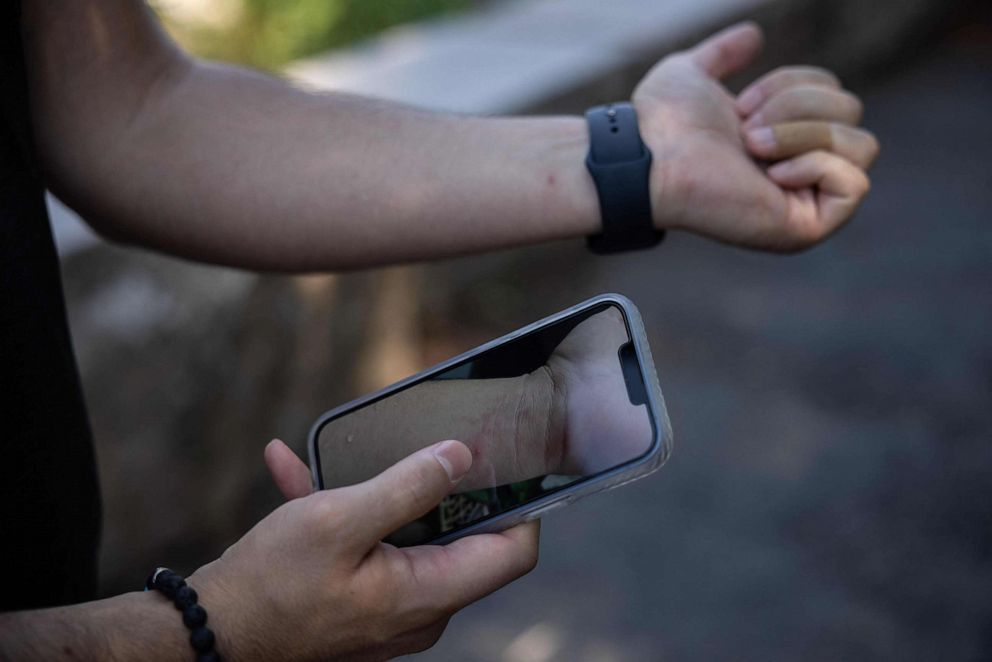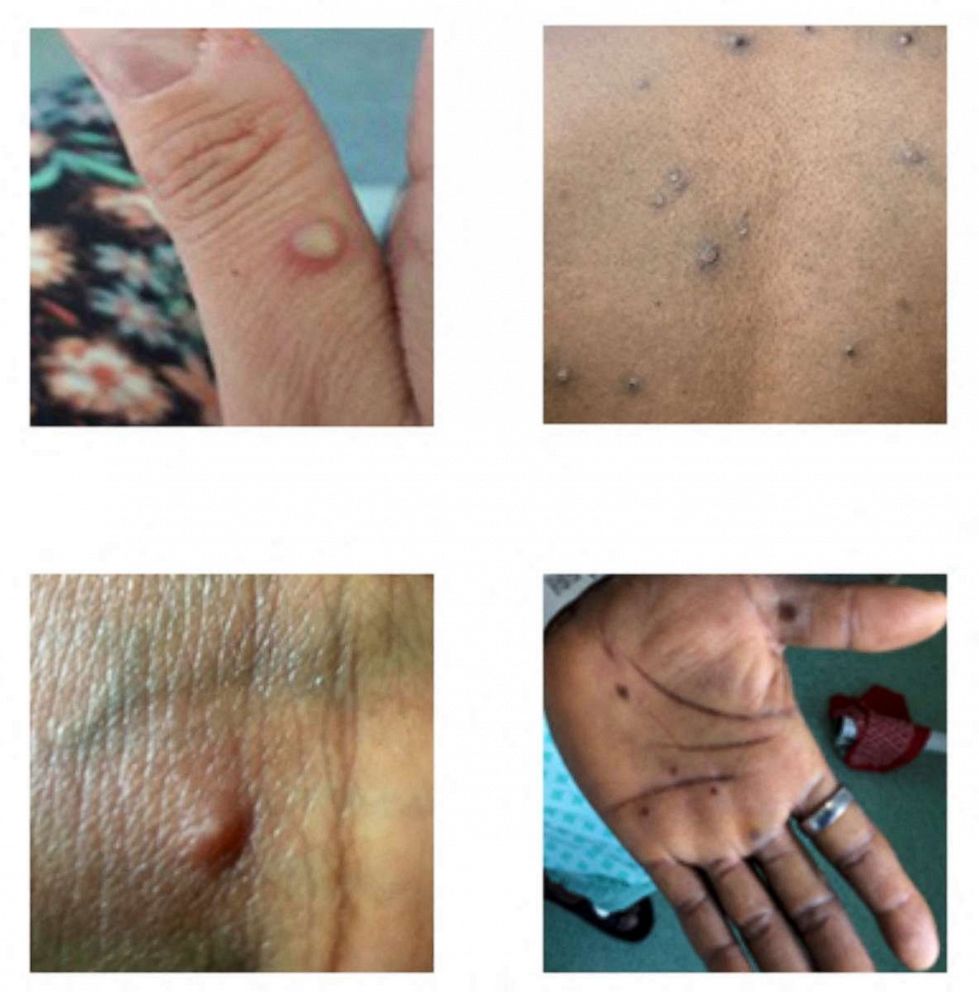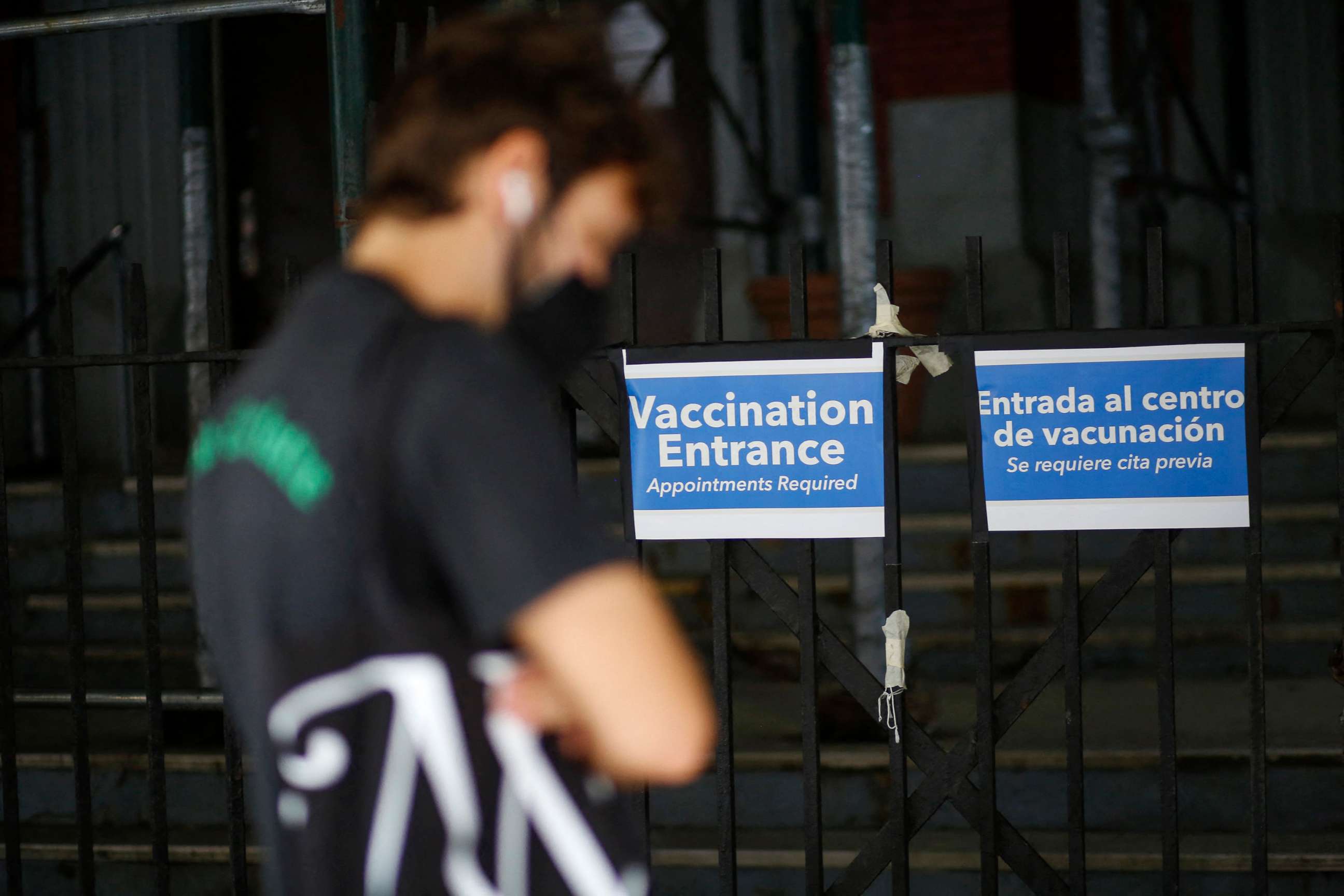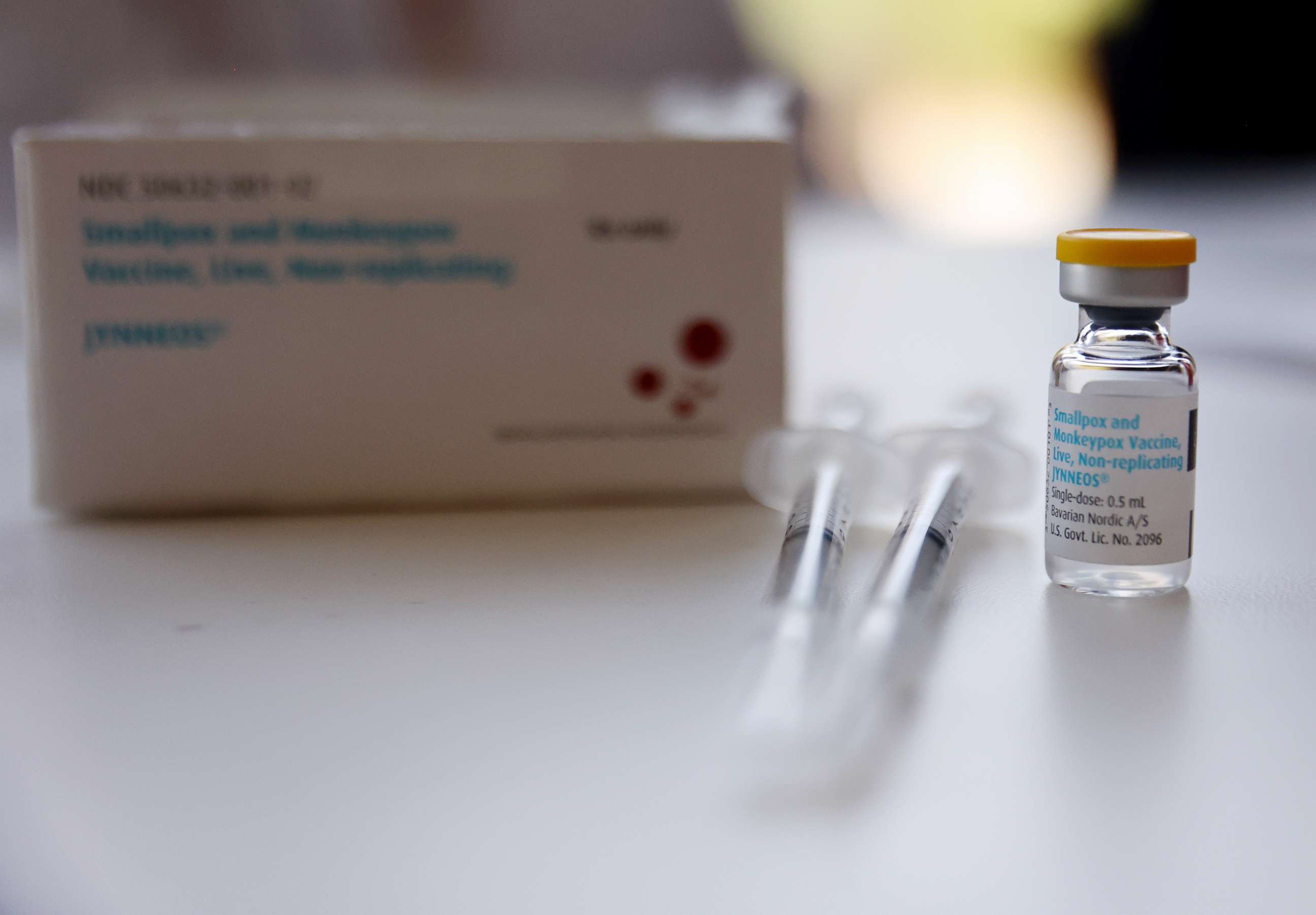Monkeypox and your skin: How to prevent and treat post-infection scarring
Monkeypox lesions should be covered in their active phase.
Last week monkeypox was declared a public health emergency in the U.S. and now with more than 8,900 confirmed cases of monkeypox, thousands of Americans are struggling with a defining feature of the condition, skin lesions.
The classic skin lesions of monkeypox start with a pimple-like lesion that can look like pus-filled bumps (pustules) with redness around them. After that, the rash goes through phases, including pustules progressing to blisters that eventually scab over.
Unfortunately, the skin lesions can leave an unwanted lasting change on the skin.
Dermatologists say monkeypox lesions should be covered in their active phase, as skin lesions are contagious until the rash has fully healed. The Centers for Disease Control and Prevention said lesions are no longer contagious when the scabs have fallen off and a fresh layer of skin has formed.
Monkeypox lesions inevitably will scab over — and while that is a step in the right direction in terms of the infection, the sores underneath can scar.
What can monkeypox scarring look like?
Once healed, monkeypox lesions can sometimes result in scarring and discoloration, which may be long-lasting or even permanent.

"In some cases, patients may develop depressed or atrophic scars that may resemble those seen following chickenpox infection or with severe acne," Dr. Trisha Dasgupta, board-certified dermatologist at Dermatology of Philadelphia, told ABC News.
Monkeypox lesions may also heal with either dark discoloration or lightening of skin color.
"These scars can have varying appearances as well as degrees of severity," Dasgupta said.
Experts said lesions on the face, while concerning, often heal better than lesions on other parts of the body.

Dermatologists caution that some patients develop scars that can be firm, itchy, and even painful.
How can you minimize monkeypox scarring?
One of the best ways to manage a scar is to prevent a scar with good wound care during the healing process.
"The best way to prevent scarring is to take good care of your skin. Nowadays, we believe healing under moist conditions is better than just letting a scab dry out and become hard," Dr. Christine Ko, professor of dermatology at Yale University, told ABC News.
Experts describe wound healing as a cascade of events. Scientists who study wound healing at a cellular level describe skin cells that leapfrog over each other in a wound bed -- and the skin cells have a much easier time doing this if the wound bed is moist compared to a dry, open wound.
Though scarring from healed monkeypox lesions may not be entirely preventable, there are steps you can take to decrease the risk of scarring, including gentle skin care.
Dermatologists said while the spots can be itchy and irritated, it is important to avoid picking, scratching, or scrubbing monkeypox lesions.

"Consider using a gentle, fragrance-free, dye-free soap or cleanser to avoid any additional irritation when cleansing the area daily," Dr. Shoshana Grossman, board-certified dermatologist at Dermatology of Philadelphia, told ABC News.
Sun protection:
"Sun protection is one of the simplest and most effective ways to maximize the appearance of scars after monkeypox lesions have healed," Grossman said.
Dermatologists recommend a broad-spectrum sunscreen with an SPF of at least 30 to lower the chance of darkening of the skin.
"Sun protection can be important to minimize scarring, especially in patients who have darker skin tones because scars can become quite dark in those patients and using some sun protection might help prevent that," Ko said.
Topical Treatments: For fully healed areas, using chemical exfoliants such as alpha-hydroxy acids and topical retinoids can be helpful to lower the chance of some types of scarring by increasing skin cell turnover and by stimulating the growth of healthy collagen.
"The limiting factor with these treatments is tolerability in terms of dryness or irritation; they should not be used on active lesions. The key with using these topical treatments is to start slowly — only a couple of times a week to start, building up gradually to nightly use," Grossman said.
How to avoid complications that can increase chance of monkeypox scarring
Monkeypox infections are caused by a virus. Sometimes as these viral lesions heal, other infections, including bacterial infections, can arise on top of the original viral infection.
"Preventing a superimposed bacterial infection in areas of existing or healing monkeypox is also crucial in preventing scarring. A good way to prevent a bacterial infection is by introducing an anti-bacterial wash into your shower routine a few times per week." Grossman said.

Monkeypox scars that are bothersome or symptomatic can be treated with a variety of approaches, including:
Time: Most scars improve on their own with time, especially with good sun protection. It can take six to 12 months for full scar maturation. This is especially true for hyperpigmented scars, which can take many months to fade.
"Ideally, a scar will look closer to the normal skin color around it within four to five weeks, but it can sometimes take longer for scars to remodel and settle, even up to a year," Ko said.
Silicone containing scar gels: Medical-grade silicone scar gels and sheets may be a good option for scars that are thick or at risk of becoming thick.
"Silicone-based products can create a protective barrier over scars which increases hydration and helps stop excess collagen build up in the skin," Dasgupta said.
Steroid injections: For thicker, hypertrophic scars or keloids, a steroid medication can be directly injected into the problem areas.
"The goal of the steroid is to calm down any residual inflammation and flatten any raised areas. While systemic steroids such as pills, intravenous or intramuscular injections can have unwanted internal side effects, intralesional steroids remain localized to the skin and are very well tolerated," Grossman said.
Surgical procedures: Surgically removing a bothersome scar may be the most effective method of treating a scar.
Scars in the skin are sometimes caused by strands of collagen under the skin pulling down on the surface of the skin — often described as stakes of a tent pulling down on the skin. A specific type of minimally invasive procedure called a subcision can help break apart these band-like scars to allow for a smoother appearance on the skin's surface.
Microneedling is another minimally-invasive procedure in which many tiny needles are used to puncture the affected skin. "These controlled micro-injuries to the skin help to encourage tissue remodeling by mimicking the skin's natural healing process," Grossman said.
Lasers: Depending on the location of the scar and skin type of the patient, lasers can be used to help improve the appearance of scars that are white or lighter in appearance than the surrounding skin. Lasers have to be carefully used in darker skin types and fractionated lasers are a specific laser approach that decreases downtime after lasers and can be safer in patients with darker skin tones.




